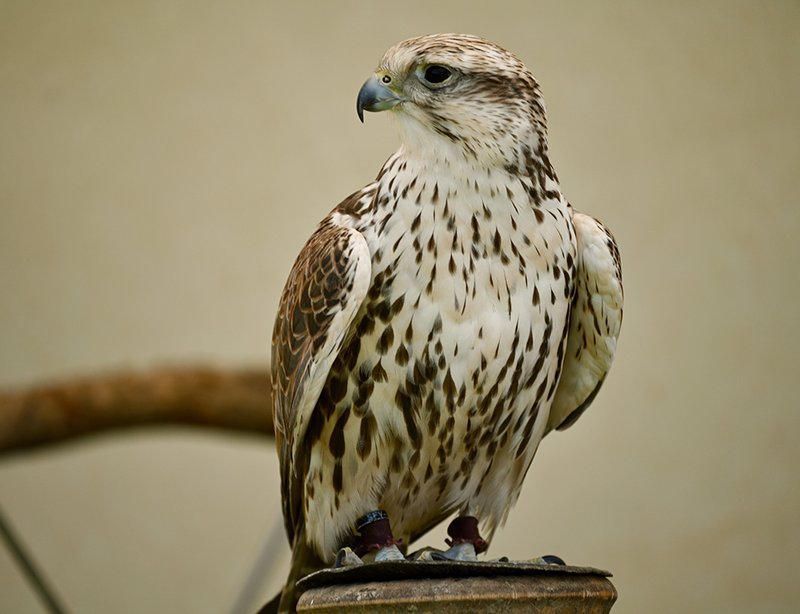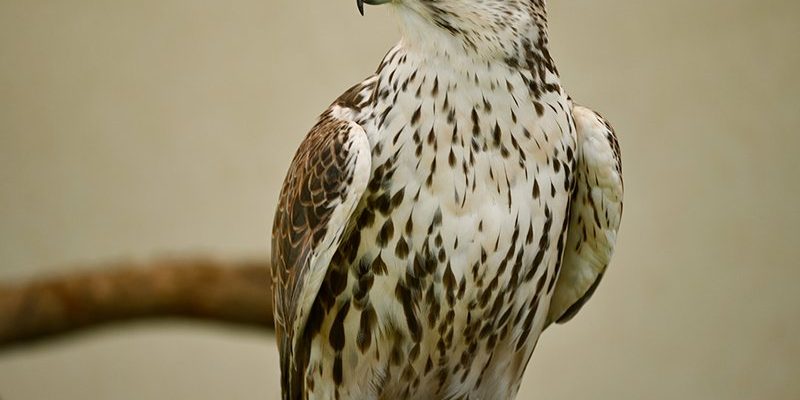
Saker Falcons are not only known for their striking looks but also their incredible hunting skills. They often hunt in open areas, making them easier to see compared to some of their more elusive cousins. If you’re new to birdwatching or simply want to sharpen your skills, this guide will help you recognize these amazing creatures in their natural habitat.
What Do Saker Falcons Look Like?
Identifying a Saker Falcon starts with its appearance. These birds are typically medium to large in size, measuring between 15 to 20 inches in length. They have a wingspan that can reach up to 47 inches, making them quite impressive as they glide through the air.
The feathers of a Saker Falcon are distinctive. Their upper parts are primarily a rich, dark brown with lighter spots that help them blend into the environment. The underside is usually pale with dark streaks running down. This coloration not only adds to their beauty but also serves as excellent camouflage while hunting, allowing them to remain unseen by both prey and potential threats.
One of the key identifying features is their facial pattern—look for the dark “moustache” marks. These marks run from their beak’s base and are a telltale sign of the Saker Falcon. Their strong, hooked beak is also worth noting, as it’s perfect for tearing into their prey.
Where to Find Saker Falcons
If you want to spot a Saker Falcon, knowing where to look is crucial. These birds prefer open habitats like steppes, semi-deserts, and grasslands. Think of places where they can easily spot their favorite meals—small mammals, birds, and even insects.
In Europe and parts of Asia, Saker Falcons are often found nesting on cliffs or in man-made structures. During migration, they can be seen traveling over vast distances, making them a bit more challenging to spot outside their nesting grounds. During these times, they often stop to hunt in open fields or near water sources.
If you’re fortunate enough to be in areas like Mongolia, Kazakhstan, or Eastern Europe, keep your eyes peeled. Whether you’re hiking, cycling, or just wandering, take time to stop and scan the sky. It’s all about patience and being aware of your surroundings.
Behavioral Traits of Saker Falcons
Understanding the behavior of Saker Falcons can also help you identify them more easily. For starters, they’re known for their agility in flight. They’re not just fast; they can change direction swiftly, especially when hunting. Watching them swoop down to catch their prey is a sight to behold.
Saker Falcons often perch on high points, like tree branches or rock outcrops. This vantage point allows them to survey their surroundings and spot potential meals. If you see a large bird sitting up high, take a moment to observe. Is it a Saker? Watch for that characteristic stance—upright and focused, ready to take off at a moment’s notice.
During breeding season, these falcons can be pretty vocal. Their calls range from high-pitched whistles to a series of hoots. Listening closely to their sounds can also help in identification, especially if you’re in a region where they nest.
Seasonal Changes in Saker Falcon Appearance
Another interesting factor to consider is that Saker Falcons can change their appearance slightly throughout the year due to molting. During the non-breeding season, their colors might appear more muted, while a fresh set of feathers during breeding season can make them look bright and vibrant.
In late summer and early fall, as they prepare to migrate, you might notice them becoming more active. This is the time when they are often out hunting to build their strength for the long journey ahead. Keep an eye out during this period, as they might be more visible and easier to spot.
Also, the specific regions they inhabit can affect their appearance. For instance, Saker Falcons in desert areas might have slightly different plumage compared to those living in forested regions, adapting their look slightly to blend in better with their surroundings.
Tips for Spotting Saker Falcons
If you’re eager to spot a Saker Falcon, here are some practical tips to enhance your birdwatching experience:
- Use binoculars: A decent pair can help you see details from a distance.
- Be patient: Sometimes, all it takes is waiting quietly in one spot.
- Know their hunting times: Early morning or late afternoon can be prime time for spotting them on the hunt.
- Study their flight patterns: Spend time watching how they soar, dive, and hover. This can help differentiate them from similar birds.
Being equipped with knowledge about their behaviors and preferred habitats can make all the difference. And don’t forget to take notes during your outings. Reflecting on what you see can enhance your skills over time.
Conservation Status and Protection
As beautiful as they are, Saker Falcons face several threats in the wild. Habitat loss, hunting, and the impact of pesticides pose serious risks to their populations. Recognizing these birds is essential, but so is understanding the importance of protecting them.
Many organizations are focused on conserving the Saker Falcon and its habitat. Being aware of conservation efforts and supporting local wildlife organizations can help ensure these remarkable birds continue to thrive in the wild.
If you find yourself lucky enough to spot a Saker Falcon, take a moment to appreciate not just its beauty but also the effort put into keeping their populations alive. Every sighting can inspire action toward conservation.
Identifying a Saker Falcon in the wild is not just about recognizing their features; it’s about appreciating the beauty and majesty of these incredible birds. By knowing what to look for and where to find them, you can enhance your birdwatching adventures.
Next time you’re outdoors—just waiting to see that flash of feathers or hear their distinctive calls—remember to take your time. Nature has a way of rewarding patience. So, grab your binoculars, head to open fields, and keep your eyes on the skies. Happy birdwatching!

